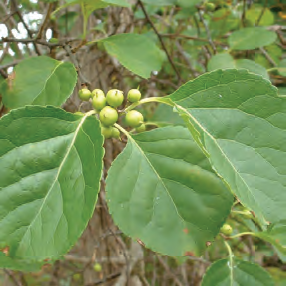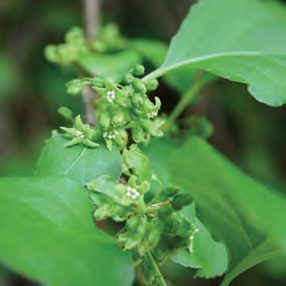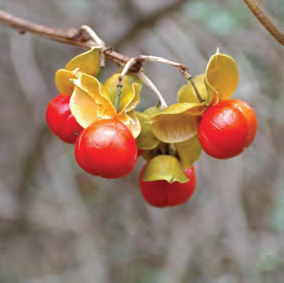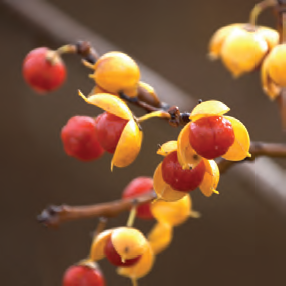Oriental Bittersweet
Celastrus orbiculatus
Bittersweet Family (Celastraceae)
Woody Vine
Flowers: May–Jun
Fruits: Sep–Nov
Native Range: China, Korea, Japan
Introduction: 1860 as an ornamental.
Mid-Atlantic Range & Habitats: Forests, woodlands, forest edges, riparian areas, and fields, throughout the region.


Oriental and American Bittersweet can hybridize, but the extent of hybridization that occurs in wild populations is not known. The viability of pollen produced by hybrid plants is low. Oriental Bittersweet is spread primarily by fruit-eating birds. Lower levels of seed dormancy and the ability of the seedlings to tolerate shading give Oriental Bittersweet a competitive advantage over American Bittersweet. Deer browsing may be a limiting factor of Oriental Bittersweet density in invaded forests.

Quick ID
- Leaves: Leaves broader, less than 2x as long as wide
- Flower/fruit Location: Flowers/fruits in the axils of leaves
- Fruits: Yellow capsule
- Flower/fruit Clusters: 2 or 3 flowers/fruits per cluster
A reliable vegetative character for American and Oriental Bittersweet vines is the way the leaves are folded during leaf-out. The leaves of Oriental Bittersweet are folded in half along the midvein, or conduplicate. The leaves of American Bittersweet are involute; each half of the leaf is rolled towards the midvein. Oriental Bittersweet typically produces white pollen while American Bittersweet has yellow pollen. American Bittersweet usually produces one or no seeds in each of its fruits, while Oriental Bittersweet usually produces 5 or more seeds, but the number of seeds per fruit can be variable.


